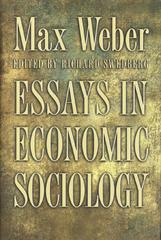E4465 ps2
3. Note: the objective of this problem is to take you through an example of how one nlight think about consequences and trade-offs involved in social insurance. Think about it as an extension of lectures rather than a problem to be solved. What needs to be done in the problem is mathematically relatively simple, the hard part is interpreting the solution. Suppose that a person has the utility function given by x/ED where C is consumption and D is the dis-utility of work or other effort. A person that is employed has the dis-utility of work given by D. A person that is unemployed and exerts effort of s to nd a job experiences disutility of search given by 32. A person that works earns 11). She has therefore the utility of D (we assume that all income is consumed). A person that loses a job searches for a new one and nds it with the probability of s. The utility of a jobless person is given by s(\\/'ED)+(1s)\\/is2 (1) B represents unemployment benets, the rst two terms represent the expected utility from outcomes following the search (with probability 3 the person nds a job right away, otherwise she receives unemployment benets). (a) Find the optimal level of search 3. What does it depend on? How does the presence of unemployment insurance affect search? Explain what is the moral hazard here and how the policy induces this behavior. Now, let's denote this optimal level of search as 3(8) to highlight that it depends on the level of benets. The objective of the government is to maximize overall utility of the person. We need two more elements. First, let the probability of losing a job be denoted by 11). Thus, the expected utility of the person is given by p-[Vi-D]+(1-PllS(B)(W-D)+(1-3(3))'/1_3-8(B)2l- Second, benets have to be nanced somehow. We will make a very simple assumption: the cost of a dollar spent by the government is given by some number 7 measured in the same units as utility. The total amount of money that the government needs to spend to nance benets is given by (1 p)(1 3)B (because (1p)(1s) is the probability that unemployment benets will need to be paid out). The objective of the government is therefore to maximize p'[x/EDl+(1P)l3(B)(\\/'b_vD)+(1SlBllVEdBVl'Y(1P)(1-S(B))B- (2) with respect to the level of benets B. (b) Can you explain using the above expression what are the benets and costs of increasing unemployment insurance? Can you relate it to the discussion in class about the optimal social insurance? (c) What do you nd unrealistic about this model? Are there examples of moral hazard that we assumed away but that may be important? (d) (Much harder and boring, only if you are very brave, there is no extra credit for it). See how much progees you can make in actually solving for the optimal level of benets (do not expect though to get an explicit solution for B, but only to derive a condition that B needs satises)







